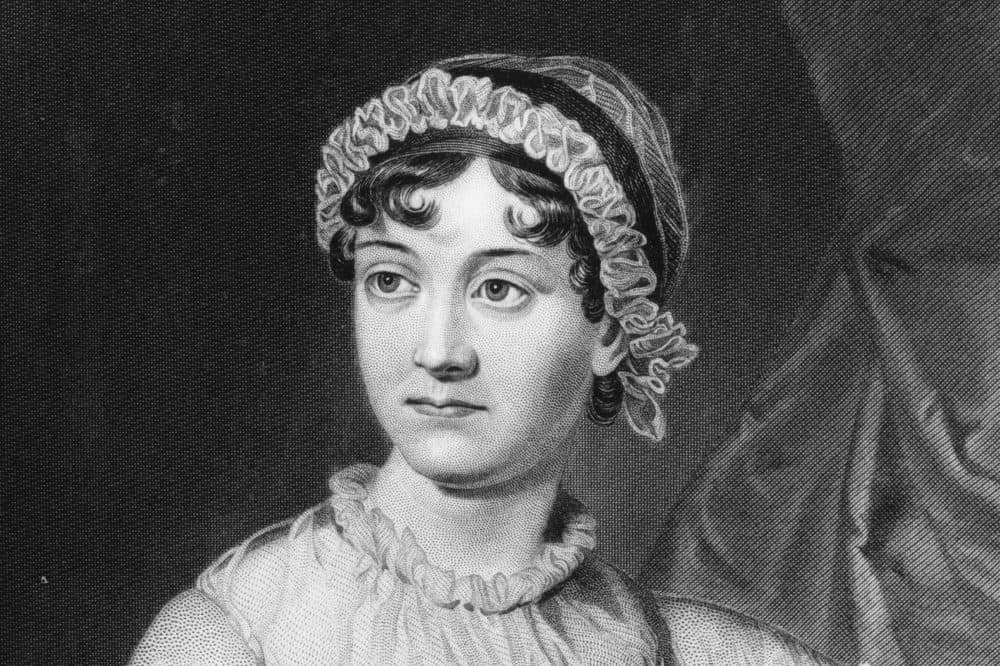Advertisement
What Might Have Been On Jane Austen's Playlist?

Fans of Jane Austen know that the author of "Sense and Sensibility" and "Pride and Prejudice" never published under her own name, and began writing in the late 1700s to entertain her family.
Music was very much a part of their gatherings, too. Austen and her siblings collected their favorite musical pieces and compiled them in family music books, a common practice at the time.
"Back in the late 18th century, in the absence of CDs and records, a lot of family entertainment would've been little sort of soirees and groups of people getting together and performing," pianist Samantha Carrasco, a member of The Austen Trio, tells Here & Now's Lisa Mullins. "Jane Austen talks about how she used to play with her nephews and nieces, and playing dances, and one person would play and then dances would be taught.
"It was very much part of the family structure, in the sort of family setup and entertainment in an evening."
Interview Highlights
On the Austen family music books, and Jane's role in putting them together
"What's so fascinating about the music books themselves is they're an absolute collection of different people's tastes, and sort of aspirations, in some respects. So the collection, it's not one particular genre of music. There's music from the theater, which Jane was very fond of. There's some political songs, and there's also a large collection of music which has come over directly from France, belonging to Jane Austen's cousin. So the family would then perhaps swap, or lend these music books so that other members the family could copy it out by hand. So this is where it gets rather interesting, because Jane Austen had copied, painstakingly copied, some of this printed music. She's got an extremely elegant hand. Everything has got a very sort of specific neatness to it."
On the inclusion of a sonata based on "God Save the King" — also one of the few musical pieces Austen named in one of her novels
"Examples of these national anthems within the Jane Austen music collection and the Austen family music collection ... I think the Austens obviously were sort of very patriotic: They've got family at sea, at war, at this time, and there's a lot of uncertainty politically. And it's interesting that in their own personal collection of music that they would have such a sort of patriotic example interwoven within the music."
"What's so fascinating about the music books themselves is they're an absolute collection of different people's tastes, and sort of aspirations, in some respects."
Samantha Carrasco
On who would do the singing in the Austen household
"Caroline, her niece, describes [Jane] as singing frequently, and her sister Cassandra would have sung. And we have to sort of transfer our minds back 200 years, really, to think about what we would do for our own entertainment — a piano in the room, perhaps when the light was going, candles by the piano, that idea of somebody entertaining and singing and enjoying a song and telling a story. People would ask for requests of certain things which they would like, the 'sing us that song again Auntie Jane,' sort of thing."
On a French love song that was part of the Austen collection
"Jane's cousin, Eliza de Feuillide, lived in Paris, and when she was there, she had a monthly subscription of songs and harp pieces. She was a harpist. The subscriptions very, very abruptly stopped at the point where, you know, the French Revolution started to really take grip, and this sort of terror formed, and Eliza de Feuillide had to flee from Paris. And this particular song was written by Jean-Baptiste Krumpholz."
On the inclusion of the "Grand Duet for the Harp and Piano," by Jan Ladislav Dussek
"The Dussek piece is a very energetic piece, and the harp and piano duo was a very sort of popular formulation back in the 18th century, perhaps the lady would have been playing the harp and the man would have been playing the piano. And the actual piece itself is very energetic, has got lots of characteristic changes and florid runs, and impressive changeover of melody from harp to piano, and a sort of a flirtatious conversation, in some respects, if you like, between the harpist and the pianist.
"And in terms of what the music has taught me, and how I understand it, the whole collection really brings out an enormous different collection of styles. The main thing is that they're all at very different levels. There's very small examples of children's drawing treble clefs in some of the manuscript books, and teaching, a sort of pedagogical role. Then there's some nursery rhymes, where you sort of start drawing the clefs and learning your notes. And then it goes right through to something rather more virtuosic by Dussek: the 'Grand Duet for the Harp and Piano,' which requires a lot more technique than, say, some of the more simple, one-handed, one-melody songs with a simple chordal accompaniment.
"So it's a combination of all these different styles, like in the novels, the various characters have all got different musical expertise. The skill of, say, ['Emma' character] Jane Fairfax, in contrast to Mary in 'Pride and Prejudice,' who can barely sort of romp through a little simple dance without embarrassing herself. It's reflected in the novels as much as it is in the music and the music collection itself."
This article was originally published on April 04, 2018.
This segment aired on April 4, 2018.